A Gift from Our Garden: Heirloom Larkspur and Poppy Seeds
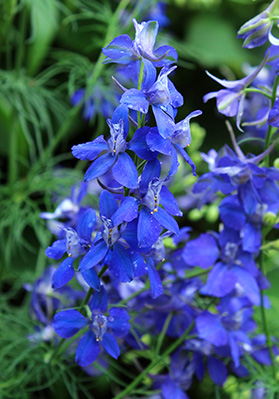
gardens since colonial days.
We’re enclosing a small gift in every fall 2013 order we ship — a packet of self-sowing larkspur or double poppy seeds collected right here at Old House Gardens.
Self-sowing annuals like these two heirlooms have long been cottage-garden favorites. They’re easy and informal, and their emerging foliage does a great job of obscuring the fading leaves of spring bulbs.
The first self-sowers in my garden came from my Grandma Kunst — Johnny-jump-ups (Viola tricolor), corn poppy (Papaver rhoeas), and annual snow-on-the-mountain (Euphorbia marginata). Others have been pass-alongs from neighbors and friends, including the two we’re giving away this fall — which have been returning faithfully here for over 25 years now — double pink breadseed or “peony-flowered” poppy (P. somniferum) and single blue larkspur (Consolida ajacis).
To get your free seeds, simply order bulbs for delivery in fall 2013. [This offer has expired. Sorry!] We hope we’ve collected enough for everyone, but when they’re gone they’re gone, so don’t delay!
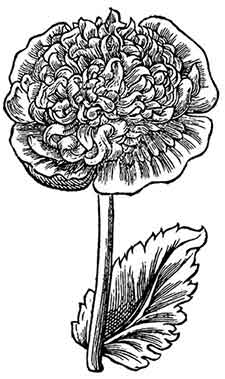
Parkinson’s Paradisi..., 1629
Heirloom Double Pink Poppy
Known as breadseed, opium, and peony-flowered poppy, Papaver somniferum has a long history in gardens. Its seedpods have been found in prehistoric sites, and although it was probably first grown for its oil-rich seeds — which are largely free of the opiates in its milky sap — by Roman times its pain-killing properties had made it a medical essential. The first colonists brought it to America, and Thomas Jefferson grew it at Monticello.
Easy FALL Poppy Planting Instructions
Don’t wait for spring. Breadseed poppy seeds need a cold period to sprout, so plant them this fall or when winter is just turning into spring. If you wait too long and the weather gets too warm, they may not sprout at all.
Choose a spot in full sun. Clear a small area, loosen the soil lightly, and scatter the seeds so they’re a couple of inches apart. Don’t cover them (or just barely), and unless your soil is dry there’s no need to water until they sprout in spring. Mark the spot so you don’t lose track of them over the winter.
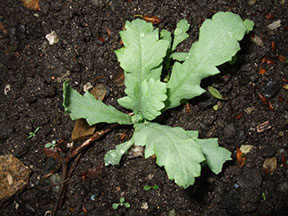
In spring, watch for tiny lettuce-like seedlings of pale, milky green. Water as needed, and thin to 6-9” apart to avoid overcrowding. Because seedlings quickly develop a taproot, transplanting them rarely works, so it’s best to just compost excess seedlings.
If all goes well, each plant will grow to 30-40 inches tall and produce a handful of flowers in early summer. Individual blooms last for a couple of days, then the petals drop and big, urn-shaped seedpods begin to form.
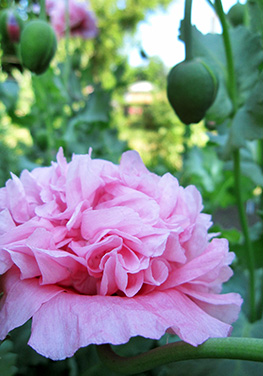
fluffy, pink flowers.
As the pods develop, the plant itself will begin to wither, turn brown, and eventually die, as all annuals do. This will take a few weeks, and although it’s not attractive, if you want to have poppies the following year, you must allow at least one plant go through the entire process.
Once the pods turn brown, the seeds are mature and you can simply scatter them wherever you want them to grow the following year. Since there will be a lot of seeds in every pod, you can also save some to plant later (but remember they need a cold period to sprout), share some with friends, or bake with them.
To enjoy the lush pink blooms in bouquets, pick when the petals are just starting to burst from the bud and sear the cut end of the stem over a flame to seal the milky sap inside. It may sound wrong, but it works.
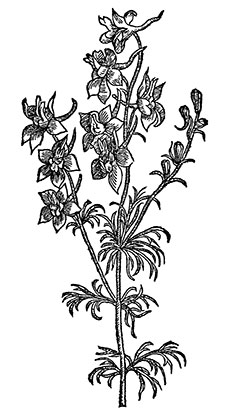
Heirloom Single Blue Larkspur
With feathery foliage and tall spikes of bright blue flowers, this Mediterranean wildflower was grown in English gardens by the mid-1500s and brought to America by the early colonists. Although it was long considered an annual Delphinium, modern botanists have reclassified it as Consolida ajacis. Its common name comes from the spur at the back of flowers which holds the nectar.
Easy FALL Larkspur Planting Instructions
Don’t wait for spring. Larkspur seeds need a cold period to sprout, so plant them this fall or when winter is just turning into spring. If you wait too long and the weather gets too warm, they may not sprout at all.
Choose a spot in full sun. Clear a small area, loosen the soil lightly, and scatter the seeds so they’re a couple of inches apart. Don’t cover them (or just barely), and unless your soil is dry there’s no need to water until they sprout in spring. Mark the spot so you don’t lose track of them over the winter.
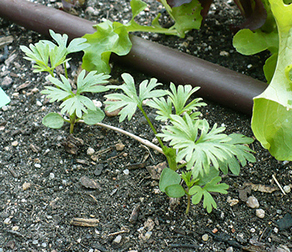
In spring, watch for tiny seedlings that quickly develop feathery foliage. Water as needed, and thin to 6-9” apart to avoid overcrowding. Because seedlings quickly develop a taproot, transplanting usually doesn’t work well, so it’s best to just compost excess seedlings.
If all goes well, each plant will grow to 36-48 inches tall and bloom in early summer, after which seedpods begin to form. As the pods develop, the plant itself will turn to yellow and brown as it begins to die. This will take a few weeks, and although it’s not attractive, if you want to have larkspur the following year, you must let at least one plant go through the entire process.
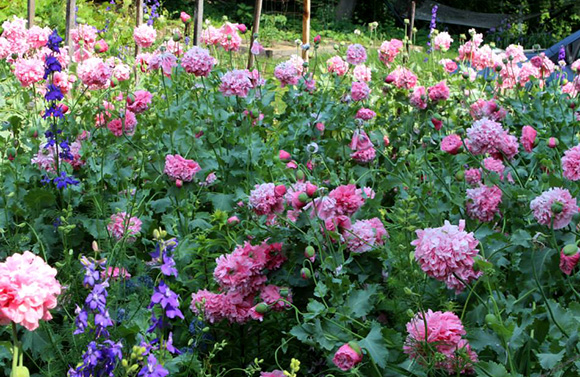
Once the pods are completely mature, they’ll start to split open and scatter their seeds. (They’re self-sowers!) Collect carefully then and scatter the seeds wherever you want them to grow the following year. Since each plant will produce thousands of seeds, you can also save some to plant later (but remember they need a cold period to sprout) and share them with friends.












